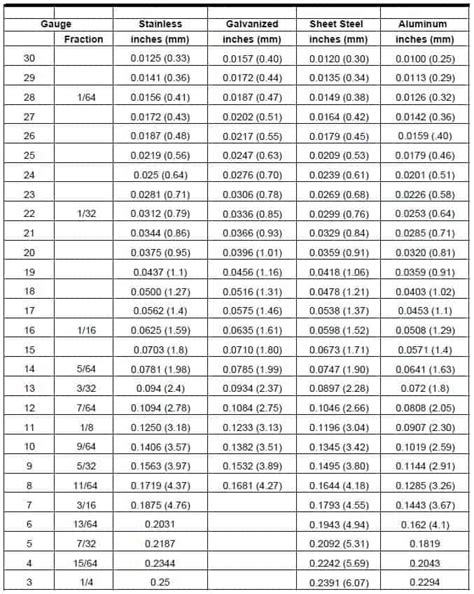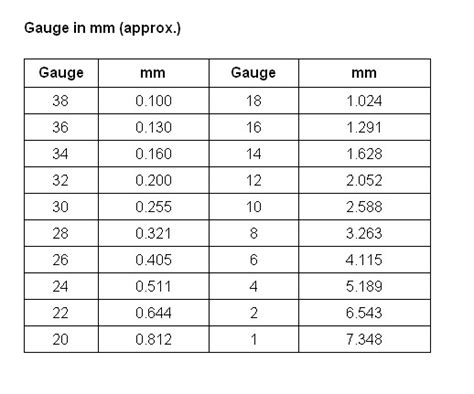16 gauge sheet metal is how thick The thickness of sheet metal is commonly specified by a traditional, non-linear measure known as its gauge. Please note that ASTM states in specification ASTM A480-10a "The use of gage number is discouraged as being an archaic .
We work closely with you to ensure that your welding project is executed quickly and efficiently without sacrificing quality. Rigid Welding produces precise results that exceed expectations.
0 · is 16 gauge steel strong
1 · gauge to inch conversion chart
2 · gauge 16 thickness in mm
3 · 16 gauge to mm conversion
4 · 16 gauge steel thickness inches
5 · 16 gauge stainless steel thickness
6 · 16 gauge galvanized steel thickness
7 · 16 ga galvanized steel thickness
Stick welding is one of the options to perform sheet metal welding, especially in field welding applications. Related reading: Best Stick Welding Rod for Thin Sheet Metal welding. Stick welding of sheet metal shall be carried out using AWS A5.1/A5.1M E6013 (CWB/CSA W48-06 E4313) type electrode of diameter 5/64 inch or 2.0 mm.
What is 16 gauge thickness in mm? When working with sheet metal, the term “gauge” is often used. Gauge are used to specify the thickness of a metal sheet. Gauge (Ga.) is a length measurement unit for diameters originating in North America and belongs to the Browne & .Galvanized Steel Coil & Sheet; Galvalume Steel Coil & Sheet; Corrugated Steel . The chart below can be used to determine the equivalent sheet thickness, in inches .GAUGE TO THICKNESS CHART Gauge Stainless Galvanized Sheet Steel Aluminum Fraction inches (mm) inches (mm) inches (mm) inches (mm) 30 0.0125 (0.33) 0.0157 (0.40) 0.0120 .
The following sheet metal gauge size reference chart gives the weight and thickness .The thickness of sheet metal is commonly specified by a traditional, non-linear measure known as its gauge. Please note that ASTM states in specification ASTM A480-10a "The use of gage number is discouraged as being an archaic .
A gauge conversion chart can be used to determine the actual thickness of sheet metal in inches or millimeters. For example, 18 gauge steel, according to a gauge conversion chart, is 0.0478 inch or 1.214 millimeter. The standard or metric equivalent of a gauge value depends on the metal. For example, 18-gauge sheet metal would be 0.040 inches thick if made from aluminum and 0.048 .For example, a 16 gauge CRCA sheet metal measures 1.5 mm thickness. Whereas, a 16 gauge aluminum sheet measures 1.3 mm thickness. This article can help engineers in sheet gauge .Below you will find a chart for metal thicknesses and weights. Commonly used metals for manufacturing at our shop are: Aluminum: 0.025", 0.032", 0.040", 0.050", 0.063", 0.080", 1/8" .
What is 16 gauge thickness in mm? When working with sheet metal, the term “gauge” is often used. Gauge are used to specify the thickness of a metal sheet. Gauge (Ga.) is a length measurement unit for diameters originating in North America and belongs to the Browne & Sharpe metering system.The chart below can be used to determine the equivalent sheet thickness, in inches or millimeters, for a gauge number from the selected gauge size standard. The weight per unit area of the sheet can also be seen in pounds per square foot and kilograms per square meter.GAUGE TO THICKNESS CHART Gauge Stainless Galvanized Sheet Steel Aluminum Fraction inches (mm) inches (mm) inches (mm) inches (mm) 30 0.0125 (0.33) 0.0157 (0.40) 0.0120 (0.30) 0.0100 (0.25) . 16 1/16 0.0625 (1.59) 0.0635 (1.61) 0.0598 (1.52) 0.0508 (1.29) For example, 16-gauge steel is approximately 1.52 mm thick, while 16-gauge aluminum is about 1.29 mm. Importance of Verification: Always confirm the precise thickness with your material supplier, particularly for polished, coated, or heat-treated materials.
The following sheet metal gauge size reference chart gives the weight and thickness of sheet metal given as a "gauge" (sometimes spelled gage) and indicates the standard thickness of sheet metal and wire.For most materials, as the gauge number .
is 16 gauge steel strong

gauge to inch conversion chart
The thickness of sheet metal is commonly specified by a traditional, non-linear measure known as its gauge. Please note that ASTM states in specification ASTM A480-10a "The use of gage number is discouraged as being an archaic term of limited usefulness not having general agreement on meaning." A gauge conversion chart can be used to determine the actual thickness of sheet metal in inches or millimeters. For example, 18 gauge steel, according to a gauge conversion chart, is 0.0478 inch or 1.214 millimeter.

The standard or metric equivalent of a gauge value depends on the metal. For example, 18-gauge sheet metal would be 0.040 inches thick if made from aluminum and 0.048 inches thick if made from stainless steel. That’s why it is important to ensure you use the right conversion chart for the given piece of sheet metal.
For example, a 16 gauge CRCA sheet metal measures 1.5 mm thickness. Whereas, a 16 gauge aluminum sheet measures 1.3 mm thickness. This article can help engineers in sheet gauge number to mm or inch conversion.Below you will find a chart for metal thicknesses and weights. Commonly used metals for manufacturing at our shop are: Aluminum: 0.025", 0.032", 0.040", 0.050", 0.063", 0.080", 1/8" (0.125") and 1/4" (0.25"). Cold and hot rolled steel: 16 gauge, 14 gauge, 1/8" and 1/4". Galvanized steel: 24 gauge, 20 gauge, 18 gauge and 16 gauge.What is 16 gauge thickness in mm? When working with sheet metal, the term “gauge” is often used. Gauge are used to specify the thickness of a metal sheet. Gauge (Ga.) is a length measurement unit for diameters originating in North America and belongs to the Browne & Sharpe metering system.
The chart below can be used to determine the equivalent sheet thickness, in inches or millimeters, for a gauge number from the selected gauge size standard. The weight per unit area of the sheet can also be seen in pounds per square foot and kilograms per square meter.GAUGE TO THICKNESS CHART Gauge Stainless Galvanized Sheet Steel Aluminum Fraction inches (mm) inches (mm) inches (mm) inches (mm) 30 0.0125 (0.33) 0.0157 (0.40) 0.0120 (0.30) 0.0100 (0.25) . 16 1/16 0.0625 (1.59) 0.0635 (1.61) 0.0598 (1.52) 0.0508 (1.29) For example, 16-gauge steel is approximately 1.52 mm thick, while 16-gauge aluminum is about 1.29 mm. Importance of Verification: Always confirm the precise thickness with your material supplier, particularly for polished, coated, or heat-treated materials.
The following sheet metal gauge size reference chart gives the weight and thickness of sheet metal given as a "gauge" (sometimes spelled gage) and indicates the standard thickness of sheet metal and wire.For most materials, as the gauge number .The thickness of sheet metal is commonly specified by a traditional, non-linear measure known as its gauge. Please note that ASTM states in specification ASTM A480-10a "The use of gage number is discouraged as being an archaic term of limited usefulness not having general agreement on meaning." A gauge conversion chart can be used to determine the actual thickness of sheet metal in inches or millimeters. For example, 18 gauge steel, according to a gauge conversion chart, is 0.0478 inch or 1.214 millimeter.
The standard or metric equivalent of a gauge value depends on the metal. For example, 18-gauge sheet metal would be 0.040 inches thick if made from aluminum and 0.048 inches thick if made from stainless steel. That’s why it is important to ensure you use the right conversion chart for the given piece of sheet metal.For example, a 16 gauge CRCA sheet metal measures 1.5 mm thickness. Whereas, a 16 gauge aluminum sheet measures 1.3 mm thickness. This article can help engineers in sheet gauge number to mm or inch conversion.

gauge 16 thickness in mm

metal dog enclosures
Welding and Metal Fabrication is a superb handbook for welders. It is authored by Larry Jeffus . The book explains all about developing skills to become a highly paid versatile welder.
16 gauge sheet metal is how thick|gauge to inch conversion chart